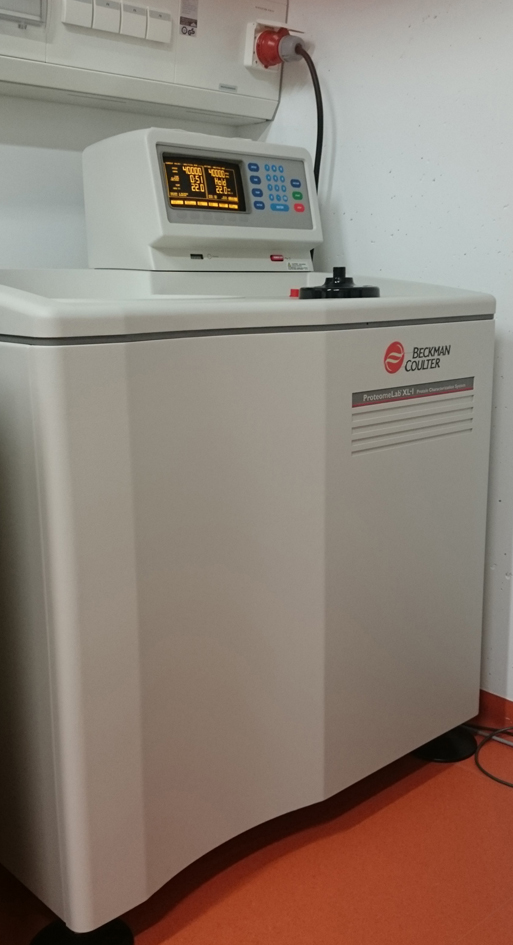Analytical ultracentrifugation (AUC)

During sedimentation velocity (SV) experiments molecules sediment rapidly due to the high speeds employed. Before the start of the experiment molecules are distributed uniformly throughout the solution. However due to the high centrifugal forces, molecules become depleted from the meniscus and form a distinct solute/solvent boundary. Movement of this boundary is observed over time using either absorbance and/or interference optics and can be used to determine the sedimentation coefficient s which is a measure of size. SV experiments are ideal to assess sample homogeneity and detect conformational changes. They are also used to determine apparent molecular weights, sedimentation and diffusion coefficients, as well as to investigate molecular interactions.
Sedimentation equilibrium (SE) is performed at lower speeds in order to establish molecular concentration gradients at thermodynamic equilibrium, ie. due to the opposite effects of sedimentation and diffusion there is no net movement of molecules in and out of the gradient. Analysis of SE data allow precise estimates of molecular weights.
Applications
• Examine sample purity
• Molecular weight determination
• Analysis of associating systems
• Ligand binding and stoichiometries
• Detection of conformational changes
• Determine sedimentation and diffusion coefficients
Sample requirements
Analytical ultracentrifugation is a non-destructive technique. All samples can be recovered and used for further analysis. Sample and reference buffer need to be matched. When using interference optics, dialysis is required. For absorbance optics chromatography buffer is sufficient.
| SV experiments | SE experiments | |
| Sample volume | 400 µl / cell | 100 µl / cell |
|
Concentration Absorbance
Interference |
A = 0.1 - 0.5 λ = 180 - 800 nm 0.05 - 30 mg/ml |
A = 0.1 - 1.0 λ = 180 - 800 nm 0.05 - 30 mg/ml |
| No. of cells | Usually 3 - 7 | Usually 3 - 7 |
Instrument
• ProteomeLab XL-I (Beckman-Coulter): Absorbance (180-800 nm) & interference optics
Rotor
• An-Ti50
Links
Beckman Coulter

